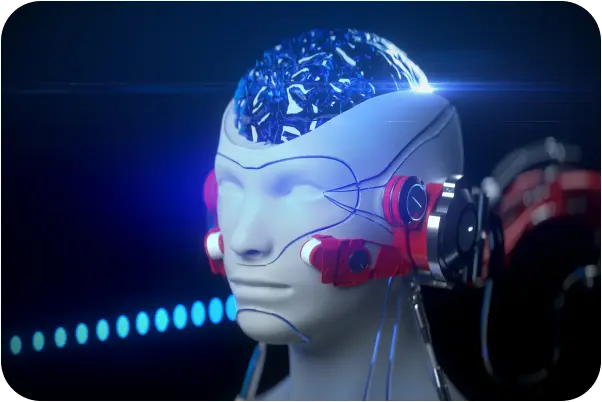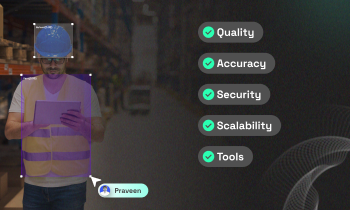Why are in-car speech datasets important for automotive AI development?
Automotive AI
Speech Recognition
In-Car Technology
As vehicles transform into sophisticated AI-driven systems, in-car speech datasets have become essential tools in developing voice interaction technologies. These speech datasets are crucial for training AI models that enable seamless, safe, and intuitive communication inside vehicles.
Understanding In-Car Speech Datasets
An in-car speech dataset is a carefully curated collection of voice recordings captured within a vehicle's interior. These datasets include both spontaneous speech and prompted commands from drivers and passengers under various driving conditions. They aim to replicate real-world scenarios, allowing AI systems to excel in the complex auditory environment of a car.
Why In-Car Speech Datasets Matter
- Acoustic Complexity: Unlike homes or studios, vehicle interiors are filled with unique noise sources such as engine sounds, road noise, and conversations with passengers. This complexity challenges traditional Automatic Speech Recognition (ASR) models. In-car speech datasets mimic these conditions, enhancing model performance by training them to handle the diverse acoustic profiles found in vehicles.
- Diverse Speech Types: In-car datasets capture a wide variety of speech types, including wake word utterances, single-shot commands, multi-turn dialogues, and emotional responses. This diversity ensures AI models can manage a broad range of interactions, improving user experience significantly.
How In-Car Speech Datasets Work
- Data Collection Methodology: Speech data is collected under real-world conditions, including both stationary vehicles and active driving scenarios. Multiple speakers in varied seating positions contribute to the recordings, ensuring a wide representation of user interactions.
- Crowdsourced Recordings: Platforms like Yugo facilitate the collection of voice data from native speakers, incorporating quality checks, metadata tagging, and speaker validation to enhance dataset reliability.
- Metadata and Annotation Strategy: Rich metadata accompanies each audio sample, detailing speaker demographics (age, gender, dialect), microphone placement, and environmental noise levels. Annotations include intent detection, overlapping speech markers, and noise labels, all of which are critical for effectively training AI models.
Real-World Applications & Use Cases
In-car speech datasets power numerous automotive AI applications:
- Voice-Enabled Infotainment: Allowing users to control infotainment systems through voice commands.
- Hands-Free Navigation: Enabling drivers to access navigation features without physical interaction.
- Driver Assistance Systems: Implementing voice commands for vehicle control, enhancing safety and convenience.
Example: A luxury electric vehicle manufacturer used 500 hours of spontaneous in-car speech data to develop a multilingual voice assistant, significantly boosting user satisfaction.
Addressing Common Challenges
Developing in-car speech recognition systems presents several challenges:
- Quality Over Quantity: Over-reliance on synthetic or clean-studio data can degrade real-world performance. Datasets need to reflect authentic acoustic environments.
- Model Bias: Lack of demographic representation can introduce biases. Comprehensive datasets that include diverse speakers and scenarios are vital to mitigate this risk.
- Effective Annotation: High-quality annotation is essential for training. Without proper tags and metadata, datasets lose their effectiveness.
Future Trends in In-Car Speech Datasets
As automotive technologies advance, in-car speech datasets will evolve to support:
- Multi-Agent AI Systems: Enabling complex interactions between voice assistants and other AI systems.
- Emotion Recognition: Integrating emotional context for more responsive user interactions.
- Federated Learning: Allowing models to learn from user data while ensuring privacy, creating personalized systems over time.
Building Trust in AI Partnerships
Choosing the right data partner is critical for AI-first companies. FutureBeeAI offers high-quality, annotated in-car speech datasets, enabling organizations to train models that perform robustly in real-world scenarios. By focusing on datasets that reflect the diverse, noisy environments of modern vehicles, automotive AI developers can create voice interaction systems that are not only intelligent but also deeply attuned to human communication nuances.
For automotive projects requiring domain-specific speech data, FutureBeeAI's collection platform can deliver production-ready datasets in 2-3 weeks, ensuring your AI solutions are effective and aligned with real-world applications.
What Else Do People Ask?
Related AI Articles
Browse Matching Datasets
Acquiring high-quality AI datasets has never been easier!!!
Get in touch with our AI data expert now!








